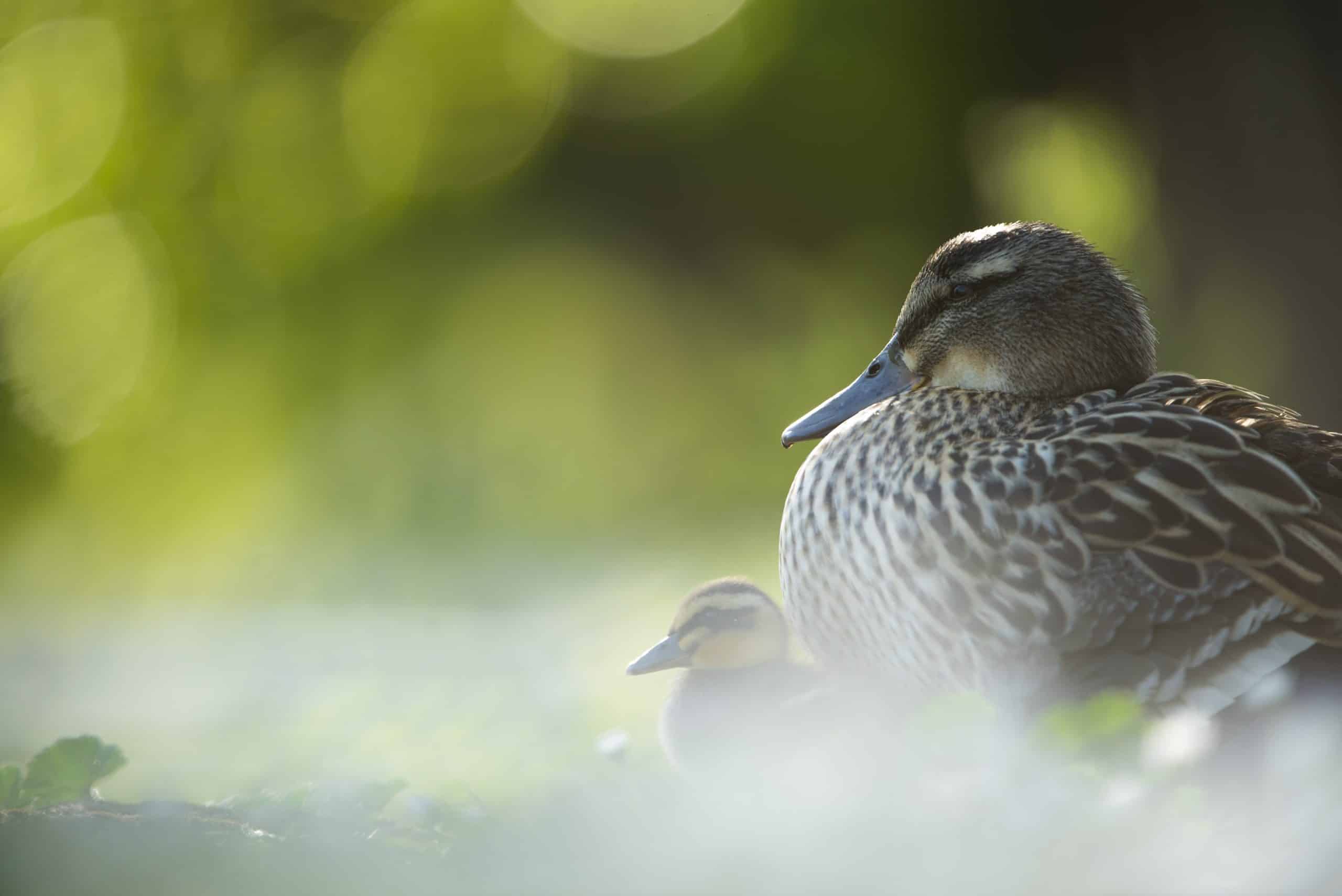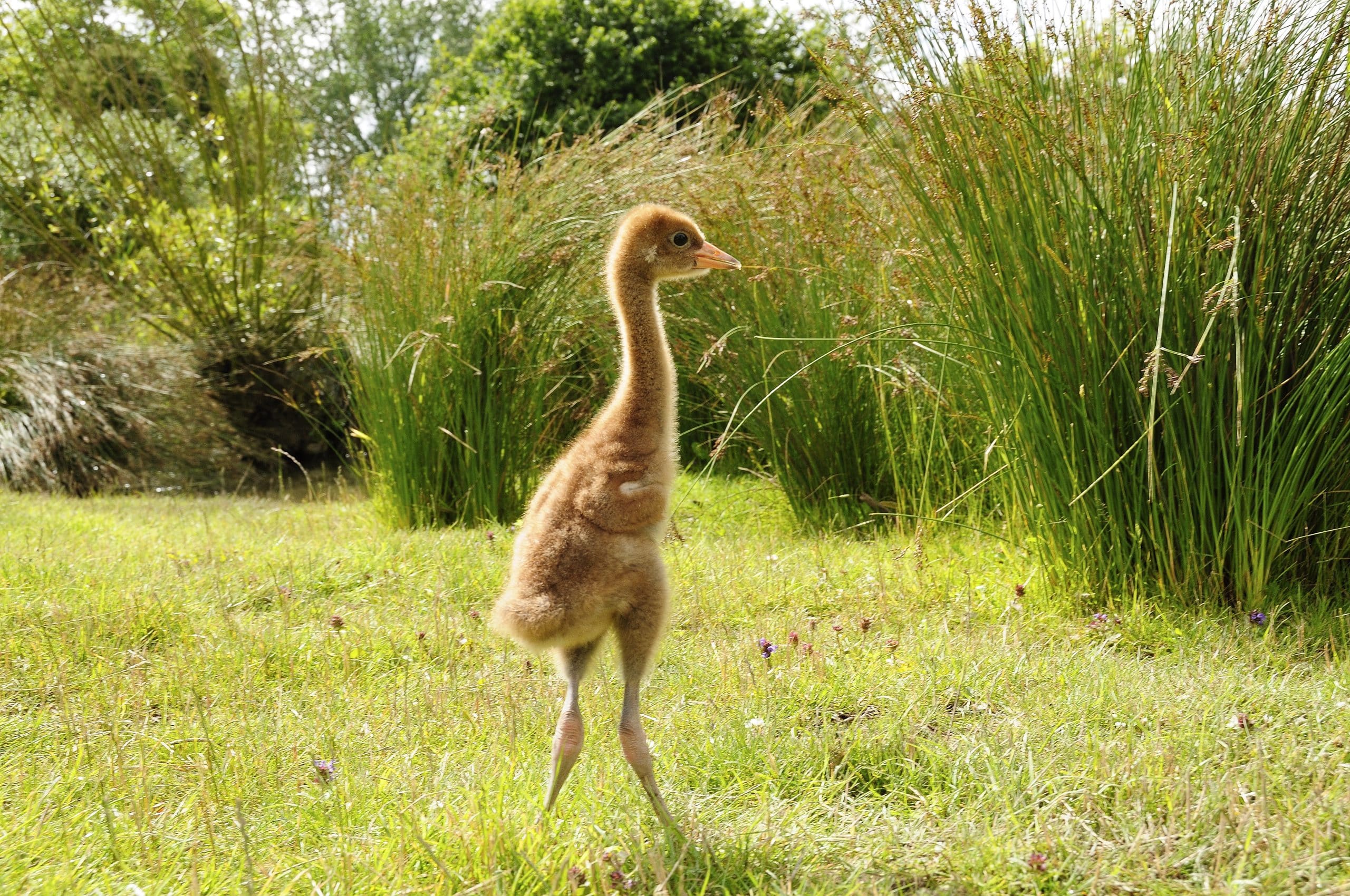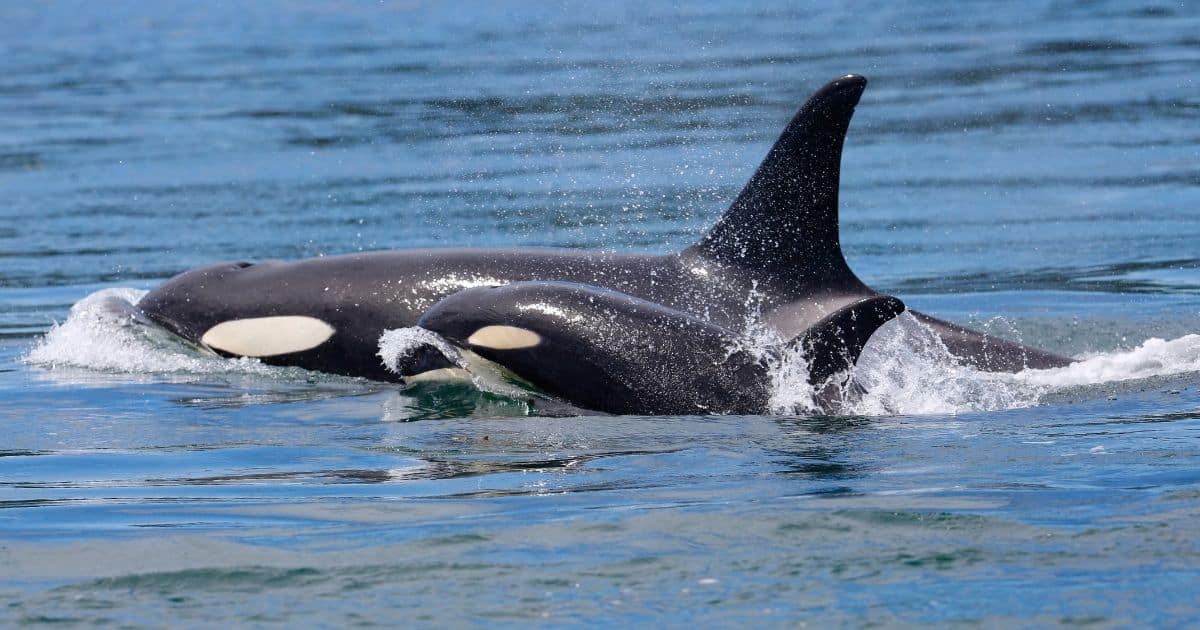But what of the mothers in the animal kingdom? Here we take a look at some of the mothers around the UK who surely deserve a medal for effort.
 Mallard Anas platyrhynchos, adult female sitting by the side of a river with duckling underneath her, Bedfordshire, April. Credit: Ben Andrew (rspb-images.com)
Mallard Anas platyrhynchos, adult female sitting by the side of a river with duckling underneath her, Bedfordshire, April. Credit: Ben Andrew (rspb-images.com)
Dedicated mallards
Mallards may be the most common duck, but their mothering skills are pretty exceptional. After the eggs are laid the males go off to form small bachelor groups, and the mother is left to sit on the eggs by herself for about 28 days. Once the chicks hatch, the mother then has to get them to the nearest body of water, crossing dangerous roads and trying to protect them from predators. She’ll continue to stay by their side and teach them how to find the best food and shelter until they develop their flight feathers.
 Common or Eurasian crane chick Grus grus, three week old captive reared chick, WWT, Slimbridge, Gloucestershire, July. Credit: Nick Upton (rspb-images.com)
Common or Eurasian crane chick Grus grus, three week old captive reared chick, WWT, Slimbridge, Gloucestershire, July. Credit: Nick Upton (rspb-images.com)
Yawning orcas
Baby orcas don’t sleep for the first month of their lives – so their mothers don’t sleep either! The theory is that staying awake gives the relatively small new-borns a better chance of evading predators, and that the constant movement keeps their body temperature up until they develop greater mass and blubber. The mothers then stay awake as well to keep an eye on them, giving up her usual 5-8 hours of sleep a night.
Smelly hoopoes
The colorful hoopoe is a rare visitor to the UK, but they do occasionally breed here and raise their young. The female lays her eggs in a tree cavity before covering them in an antimicrobial secretion that smells like rotten eggs. It’s thought that this protects the eggs against bacteria as well as making them less appealing to predators. Then when the chicks hatch, they add to the smell by projectile pooping to ward off predators!
Caring earwigs
Insects aren’t normally considered top contenders for motherhood, but the earwig stands out. A mother earwig looks after her larvae throughout the winter until they shed their first skin, which is very unusual maternal behavior for a non-social insect. She also chews up food for her young and will relocate her entire family if she senses danger.
A courageous crane
Sometimes it’s an individual rather than a species who stands out, as with a mother crane in Aberdeenshire back in 2016. When this crane’s chick was just five weeks old her mate disappeared. This was a huge blow – normally, both the mother and father care for the chick from the moment the egg is laid until the moment it learns to fly. They work together to protect the chick from all sorts of dangers, from flooding to foxes, and chicks still frequently don’t make it. This particular mother managed to raise her chick all by herself, however, and at the end of the season both mother and son were able to fly off on migration. Go mum!
These mothers work hard to raise their young, but they still face threats beyond their control: loss of habitat, loss of food, and climate change all have an impact on these species.
To learn how you can help, click here.
By RSPB

